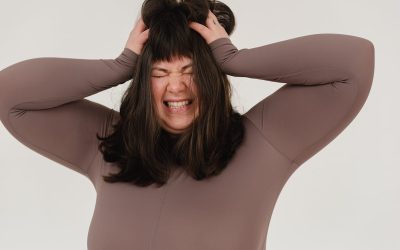Smaller ponytail, wider part, more visible scalp – these are the most common signs of hair loss in women. It is estimated that at least a third of females are going to experience hair thinning.
The hair loss is typically diffused, affecting the entire scalp. However, the reduction in volume is moderate which is why it rarely leads to balding.
What’s more? The thinning happens gradually so, it can take a while before it becomes noticeable.
Hair Thinning – Can It Be Reversed?
There are different reasons behind hair loss in women. The cause is a crucial factor in the prognosis of the alopecia.
Simply put:
It is possible to grow back thinning hair in certain conditions. Some hair loss problems are even reversible – meaning they are not permanent.
The leading cause of hair thinning in women is a genetic condition called female-pattern hair loss. Also known as androgenetic alopecia, its onset takes place around the age of 40 or 50.
The most common sign of female pattern hair loss is widening of the part at the top of the head. In this condition, hair growth becomes slower. The follicles also change, producing weaker strands.
Androgenetic alopecia is a permanent condition. The older you become, the more pronounced its effect is.
Fortunately, there are treatments which can prevent female pattern hair loss from rapidly progressing.
Hair thinning can also be the result of exposure to extreme physical and emotional stress. This hair loss problem is called telogen effluvium. Here, the normal hair growth cycle gets disrupted with strands prematurely entering the resting phase.
Telogen effluvium causes abrupt diffused hair thinning in one area or all over the scalp.
The good thing is:
This condition usually resolves itself on its own in six months. But it may take 12 to 18 months before your locks return to its previous appearance.
Other common causes of hair thinning in women include overusing hair products and equipment like hairdryers. Hormonal imbalance, thyroid disease and iron-deficiency anaemia can also lead to excessive hair shedding.
How to Deal with Hair Thinning
If you are suffering from excessive hair shedding, the choice is no longer just to live with it. Medical and cosmetic treatments for hair loss are now available.
Here’s the thing:
Hair thinning can only be effectively addressed if its exact cause is identified. Even if you get cosmetic interventions like hair transplant, the thinning may continue if the underlying cause is not identified and addressed.
So, if you notice that you are shedding a lot of hair, the best course of action is to seek professional help. A hair specialist like a trichologist can identify the reason behind the thinning and create a tailored treatment plan for you.
It is also highly recommended that you see a specialist right away. Bringing back the previous thickness of your hair can be difficult if you’ve already lost a significant amount.
Keep in mind that these clinically-proven treatments do not yield instant results. It can take 6 months before the effects become noticeable. So, you need to be patient and more importantly, religiously take your medications or attend your treatment sessions.
Lastly, look after your emotional well-being. Coming to terms with hair loss can be difficult. Losing your precious locks can make you feel embarrassed and less confident. Hence, it is important to have someone to talk to about what you are going through.
Are you experiencing hair thinning? With the help of a qualified trichologist in Dublin, it is possible to regrow your hair and bring back its previous volume. Call us today on +353 (0)1 6793618 and schedule an appointment with our specialist!



